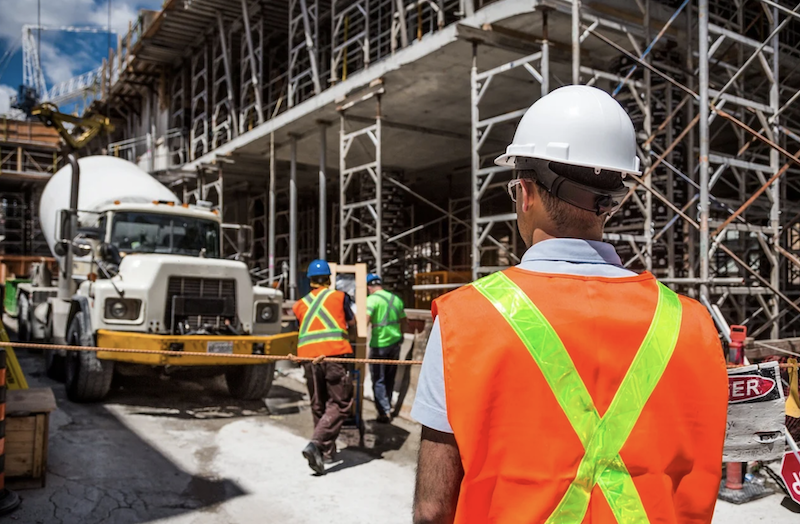Construction employment in October remained depressed compared to pre-pandemic levels in three-fourths of states despite the fact 36 states and D.C. added new construction jobs in October, according to an analysis by the Associated General Contractors of America of government employment data released today. Association officials added that demand for most types of nonresidential projects remains weak amid pandemic-related uncertainty and urged federal officials to enact a new round of coronavirus recovery measures.
“An increasing number of nonresidential contractors are experiencing cancellations that are forcing them to lay off workers,” said Ken Simonson, the association’s chief economist. “Although single-family homebuilding and remodeling contractors are adding workers, most states are likely to have a net loss of construction workers soon, especially from high-paying, nonresidential jobs.”
Seasonally adjusted construction employment in October was lower than in February—the last month before the pandemic forced many contractors to suspend work—in 37 states, Simonson noted. New York lost the most construction jobs over that span (-41,600 jobs or -10.1%), closely followed by Texas (-41,500 jobs, -5.2%). Vermont had the largest percentage loss (-21.8%, -3,200 jobs), followed by North Dakota (-13.2%, -3,900 jobs).
Only thirteen states and the District of Columbia added construction jobs from February to October. Virginia added the most (7,100 jobs, 3.5%), followed by Kentucky (4,300 jobs, 5.4%) and Alabama (4,300 jobs, 4.5%). South Dakota posted the largest percentage gain (9.4%, 2,300 jobs), followed by Kentucky.
Construction employment decreased from September to October in 12 states, increased in 36 states and D.C., and was unchanged in South Dakota and Utah. Maryland shed the most construction jobs from September to October (-2,600 jobs or -1.4%), followed by Georgia (-1,800 jobs, -0.9%). Maryland also had the largest percentage decrease, followed by Delaware (-1.4%, -300 jobs).
California added the most construction jobs over the month (26,300 jobs, 3.1%), followed by Texas (9,400 jobs, 1.3%). Alaska had the largest percentage gain for the month (10.1%, 1,500 jobs), followed by Iowa (7.0%, 4,700 jobs).
Association officials urged members of Congress to craft a new series of coronavirus relief measures to help offset declining demand for most types of nonresidential construction. Those measures must include new infrastructure investments, liability reforms to protect honest firms from unwarranted pandemic lawsuits and an extension of, and new flexibility for, measures like the Paycheck Protection Program. They also urged Congress to ensure the current administration does not move forward with its plans to tax firms that used Paycheck Protection Program loans to protect essential construction jobs.
“With the pandemic raging again in most parts of the country, countless construction jobs are at risk as owners cancel or delay construction projects amid uncertainty about the future,” said Stephen E. Sandherr, the association’s chief executive officer. “Enacting needed new recovery measures now will help protect many good-paying construction careers during what will likely be a difficult winter for the economy.”
View state employment February-October data and rankings; and September-October rankings.
Related Stories
Market Data | Nov 29, 2016
It’s not just traditional infrastructure that requires investment
A national survey finds strong support for essential community buildings.
Industry Research | Nov 28, 2016
Building America: The Merit Shop Scorecard
ABC releases state rankings on policies affecting construction industry.
Multifamily Housing | Nov 28, 2016
Axiometrics predicts apartment deliveries will peak by mid 2017
New York is projected to lead the nation next year, thanks to construction delays in 2016
Market Data | Nov 22, 2016
Construction activity will slow next year: JLL
Risk, labor, and technology are impacting what gets built.
Market Data | Nov 17, 2016
Architecture Billings Index rebounds after two down months
Decline in new design contracts suggests volatility in design activity to persist.
Market Data | Nov 11, 2016
Brand marketing: Why the B2B world needs to embrace consumers
The relevance of brand recognition has always been debatable in the B2B universe. With notable exceptions like BASF, few manufacturers or industry groups see value in generating top-of-mind awareness for their products and services with consumers.
Industry Research | Nov 8, 2016
Austin, Texas wins ‘Top City’ in the Emerging Trends in Real Estate outlook
Austin was followed on the list by Dallas/Fort Worth, Texas and Portland, Ore.
Market Data | Nov 2, 2016
Nonresidential construction spending down in September, but August data upwardly revised
The government revised the August nonresidential construction spending estimate from $686.6 billion to $696.6 billion.
Market Data | Oct 31, 2016
Nonresidential fixed investment expands again during solid third quarter
The acceleration in real GDP growth was driven by a combination of factors, including an upturn in exports, a smaller decrease in state and local government spending and an upturn in federal government spending, says ABC Chief Economist Anirban Basu.
Market Data | Oct 28, 2016
U.S. construction solid and stable in Q3 of 2016; Presidential election seen as influence on industry for 2017
Rider Levett Bucknall’s Third Quarter 2016 USA Construction Cost Report puts the complete spectrum of construction sectors and markets in perspective as it assesses the current state of the industry.
















